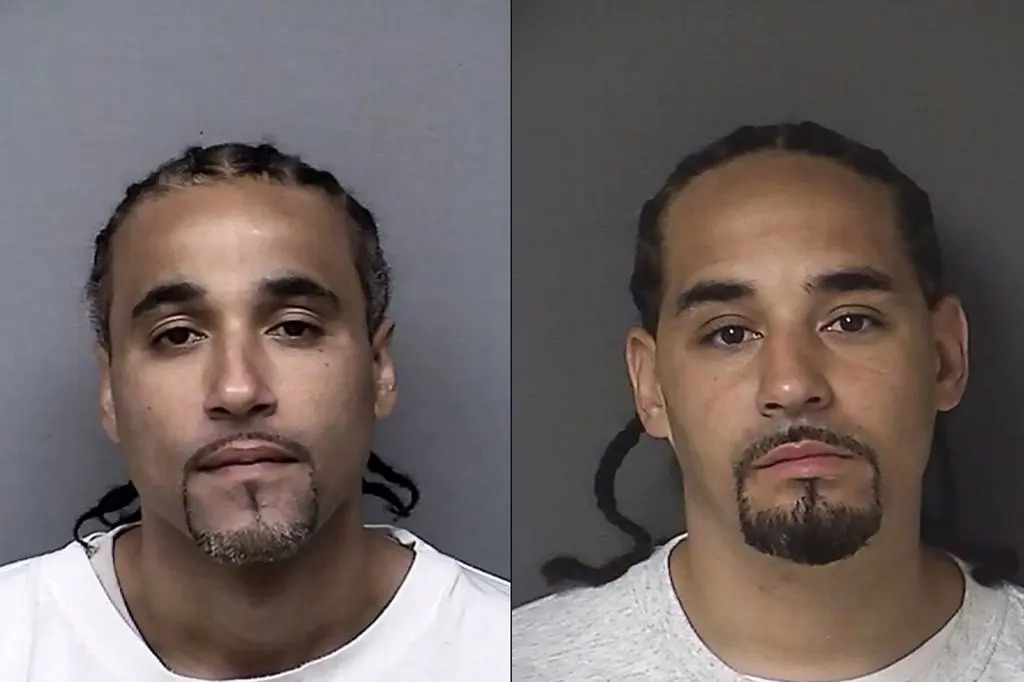Man Gets $1 Million For Serving 17 Years In Prison In Place Of His Doppelganger

Nearly two decades ago, Richard A. Jones was convicted of aggravated robbery after being picked out of a lineup by witnesses who said he stole a cell phone in a Walmart parking lot in Kansas.
But while Mr. Jones, who maintains he is innocent, was serving his 19-year sentence at Lansing Correctional Facility, inmates told him he looked like a prisoner named Ricky. In 2017, Mr. Jones's conviction was overturned by a judge when the witnesses were presented with photos of both him and the actual culprit and were unable to distinguish between the two.

Richard A. Jones, left, and Ricky Amos
As a result, Mr. Jones, who was 42 years old at the time, was focused on rebuilding his life. According to the news, he submitted a petition to the 10th Judicial District Court of Kansas, requesting compensation of over $1.1 million from the state, equivalent to approximately $65,000 for each year of his wrongful incarceration.
He was only 25 years old and a father of two young daughters when he was imprisoned for a robbery he maintains he did not commit, serving a total of 17 years behind bars. He also wants to seek help with tuition, housing, and counseling.
“It took a big chunk of my life that I can never get back,” Mr. Jones said in an interview on Thursday. “I am just trying to get stable in my everyday life. I am still transitioning.” His daughters are now 24 and 19, he said, and he is a grandfather. “At that time I was pretty much trying to be responsible as a father,” he said. “I was not perfect, but I was a big part of their lives, and when I got incarcerated it was hard for me because I was used to being around for my kids.”
“It was a hard pill to swallow,” Mr. Jones said.
The case of Mr. Jones serves as an example of the weaknesses in convictions that rely on eyewitness identification, a factor that is responsible for the majority of wrongful convictions in the United States. According to the Midwest Innocence Project, which provided assistance in securing his release, more than 75 percent of convictions that have been overturned through DNA testing involve eyewitness identifications.
According to the petition, there existed no physical evidence that linked Mr. Jones to the incident that occurred in the Roeland Park parking lot on May 31, 1999.
On that day, he was reportedly at his residence in Kansas City, Missouri, tidying up after hosting a party with his girlfriend and her sisters. At 8 p.m. on the same day, in Roeland Park, a man attempted to snatch a woman's handbag as she exited her vehicle. Although the woman resisted, he managed to flee with her phone. According to her statement to a detective, she caught a glimpse of the back of his head. The petition noted that two additional individuals witnessed the attack, but their descriptions varied significantly.
One described the assailant as a light-skinned black man, while another described him as a dark-skinned Hispanic. The third witness described the attacker as a tanned white man. The vehicle used for the getaway was tracked to a man who claimed that he and his companions were seeking money for drugs and had picked up a man who went by the name of "Rick," whom they hardly knew.
The petition stated that this individual was shown numerous photographs of men with similar names and physical features but mistakenly identified Mr. Jones as the person whom they had transported to the scene of the robbery in the parking lot.
According to the petition, Mr. Jones was taken into custody in April 2000. During a lineup, his picture was the only one among the six images that featured a light-skinned individual. Alice Craig, one of the lawyers and researchers who assisted in securing Mr. Jones's release through the University of Kansas School of Law's Project for Innocence, stated that the witnesses were not provided with any other viable options and thus were forced to select Jones in the lineup as it was constructed. According to the petition, Alice Craig stated in a statement after Mr. Jones's release in June 2017 that none of the other photos in the lineup corresponded with the description provided by the witnesses.
Although the witnesses were uncertain whether Mr. Jones was the assailant when they saw him in person during a jury trial, he was nevertheless convicted and imprisoned in 2000. In prison, he was told about Ricky Amos when inmates started confusing the two. “I took it with a grain of salt,” Mr. Jones said Thursday.
But an idea started brewing that he thought could help him, once again, assert his innocence. “I knew it was, at that time, it was my only shot,” he said. “I could not lose. I had to throw it out there.” After a thorough evaluation, Judge Moriarty determined that there was no question that a jury would be unable to reach a verdict of guilt and that no reasonable jury could have arrived at such a conclusion in Mr. Jones's case.
As a result, Mr. Jones was released from prison on June 7, 2017. “I just want my name to be clear,” he said.
Source: The Sun: abcnews:

 My First News Item
My First News Item My Nine News Item
My Nine News Item